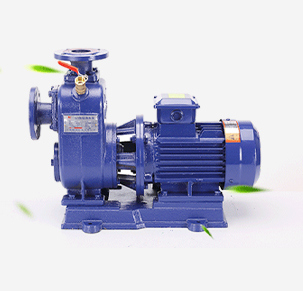TEL:
+86 13120555503
English
- Afrikaans
- Albanian
- Amharic
- Arabic
- Armenian
- Azerbaijani
- Basque
- Belarusian
- Bengali
- Bosnian
- Bulgarian
- Catalan
- Cebuano
- Corsican
- Croatian
- Czech
- Danish
- Dutch
- English
- Esperanto
- Estonian
- Finnish
- French
- Frisian
- Galician
- Georgian
- German
- Greek
- Gujarati
- Haitian Creole
- hausa
- hawaiian
- Hebrew
- Hindi
- Miao
- Hungarian
- Icelandic
- igbo
- Indonesian
- irish
- Italian
- Japanese
- Javanese
- Kannada
- kazakh
- Khmer
- Rwandese
- Korean
- Kurdish
- Kyrgyz
- Lao
- Latin
- Latvian
- Lithuanian
- Luxembourgish
- Macedonian
- Malgashi
- Malay
- Malayalam
- Maltese
- Maori
- Marathi
- Mongolian
- Myanmar
- Nepali
- Norwegian
- Norwegian
- Occitan
- Pashto
- Persian
- Polish
- Portuguese
- Punjabi
- Romanian
- Russian
- Samoan
- Scottish Gaelic
- Serbian
- Sesotho
- Shona
- Sindhi
- Sinhala
- Slovak
- Slovenian
- Somali
- Spanish
- Sundanese
- Swahili
- Swedish
- Tagalog
- Tajik
- Tamil
- Tatar
- Telugu
- Thai
- Turkish
- Turkmen
- Ukrainian
- Urdu
- Uighur
- Uzbek
- Vietnamese
- Welsh
- Bantu
- Yiddish
- Yoruba
- Zulu
Telephone: +86 13120555503
Email: frank@cypump.com
Feb . 16, 2025 16:41 Back to list
pipeline pump
In the intricate world of wastewater management, the sewer lift pump emerges as an unsung hero, tasked with the critical duty of moving wastewater from lower to higher elevations, particularly when gravity fails to suffice. As communities expand and infrastructures age, the demand for efficient and reliable sewer lift pumps has never been greater. Understanding the nuances of these devices not only enhances operational efficiency but also ensures environmental compliance and public health safety.
A crucial yet often underestimated aspect of sewer lift pump management is routine maintenance. Regardless of the pump's initial quality, regular maintenance schedules that include inspection of seals, motor testing, and impeller cleaning are vital. Predictive maintenance, aided by IoT devices, enables real-time monitoring of pump performance, alerting operators to potential issues before they escalate into costly repairs or environmental incidents. In terms of technological advancements, the integration of smart technologies into sewer lift pumps marks a significant leap forward. IoT-connected sensors offer precise monitoring of pump metrics such as flow rate, pressure levels, and operational temperature. This real-time data collection facilitates proactive maintenance strategies, reducing unplanned downtime and extending the lifecycle of the equipment. Furthermore, energy-efficient models are at the forefront of modern designs, as municipalities strive to reduce their carbon footprint. Pumps equipped with VFDs adjust motor speed in response to real-time demands, offering considerable energy savings. Some advanced systems even harness renewable energy sources such as solar power to further diminish the environmental impact. It's also worth noting the importance of skilled personnel in the operation of sewer lift stations. Training staff to understand the complexities of pump operation, troubleshooting, and repairs ensures that minor glitches do not escalate into major setbacks. Workshops and certification programs for operation and maintenance can uplift the skill set of teams handling these crucial systems. In conclusion, the sewer lift pump plays a vital role in contemporary wastewater management systems. Its successful deployment hinges on a careful balance of experience, expertise, authority, and trust. As populations grow and environmental regulations tighten, the evolution of sewer lift pumps toward smarter, more sustainable models will undoubtedly continue, securing their place as indispensable components of modern infrastructure.


A crucial yet often underestimated aspect of sewer lift pump management is routine maintenance. Regardless of the pump's initial quality, regular maintenance schedules that include inspection of seals, motor testing, and impeller cleaning are vital. Predictive maintenance, aided by IoT devices, enables real-time monitoring of pump performance, alerting operators to potential issues before they escalate into costly repairs or environmental incidents. In terms of technological advancements, the integration of smart technologies into sewer lift pumps marks a significant leap forward. IoT-connected sensors offer precise monitoring of pump metrics such as flow rate, pressure levels, and operational temperature. This real-time data collection facilitates proactive maintenance strategies, reducing unplanned downtime and extending the lifecycle of the equipment. Furthermore, energy-efficient models are at the forefront of modern designs, as municipalities strive to reduce their carbon footprint. Pumps equipped with VFDs adjust motor speed in response to real-time demands, offering considerable energy savings. Some advanced systems even harness renewable energy sources such as solar power to further diminish the environmental impact. It's also worth noting the importance of skilled personnel in the operation of sewer lift stations. Training staff to understand the complexities of pump operation, troubleshooting, and repairs ensures that minor glitches do not escalate into major setbacks. Workshops and certification programs for operation and maintenance can uplift the skill set of teams handling these crucial systems. In conclusion, the sewer lift pump plays a vital role in contemporary wastewater management systems. Its successful deployment hinges on a careful balance of experience, expertise, authority, and trust. As populations grow and environmental regulations tighten, the evolution of sewer lift pumps toward smarter, more sustainable models will undoubtedly continue, securing their place as indispensable components of modern infrastructure.
Share
Next:
Latest news
-
Heavy-Duty Mining Sludge Pumps - Wear-Resistant Slurry Handling
NewsAug.02,2025
-
Horizontal Split Case Pump with GPT-4 Turbo | High Efficiency
NewsAug.01,2025
-
ISG Series Pipeline Pump - Chi Yuan Pumps | High Efficiency, Durable Design
NewsAug.01,2025
-
Advanced Flue Gas Desulfurization Pump with GPT-4 Turbo | Durable & Efficient
NewsJul.31,2025
-
ISG Series Vertical Pipeline Pump - Chi Yuan Pumps | Advanced Hydraulic Design&Durable Construction
NewsJul.31,2025
-
ISG Series Vertical Pipeline Pump - Chi Yuan Pumps | Energy Efficient & Low Noise
NewsJul.31,2025










